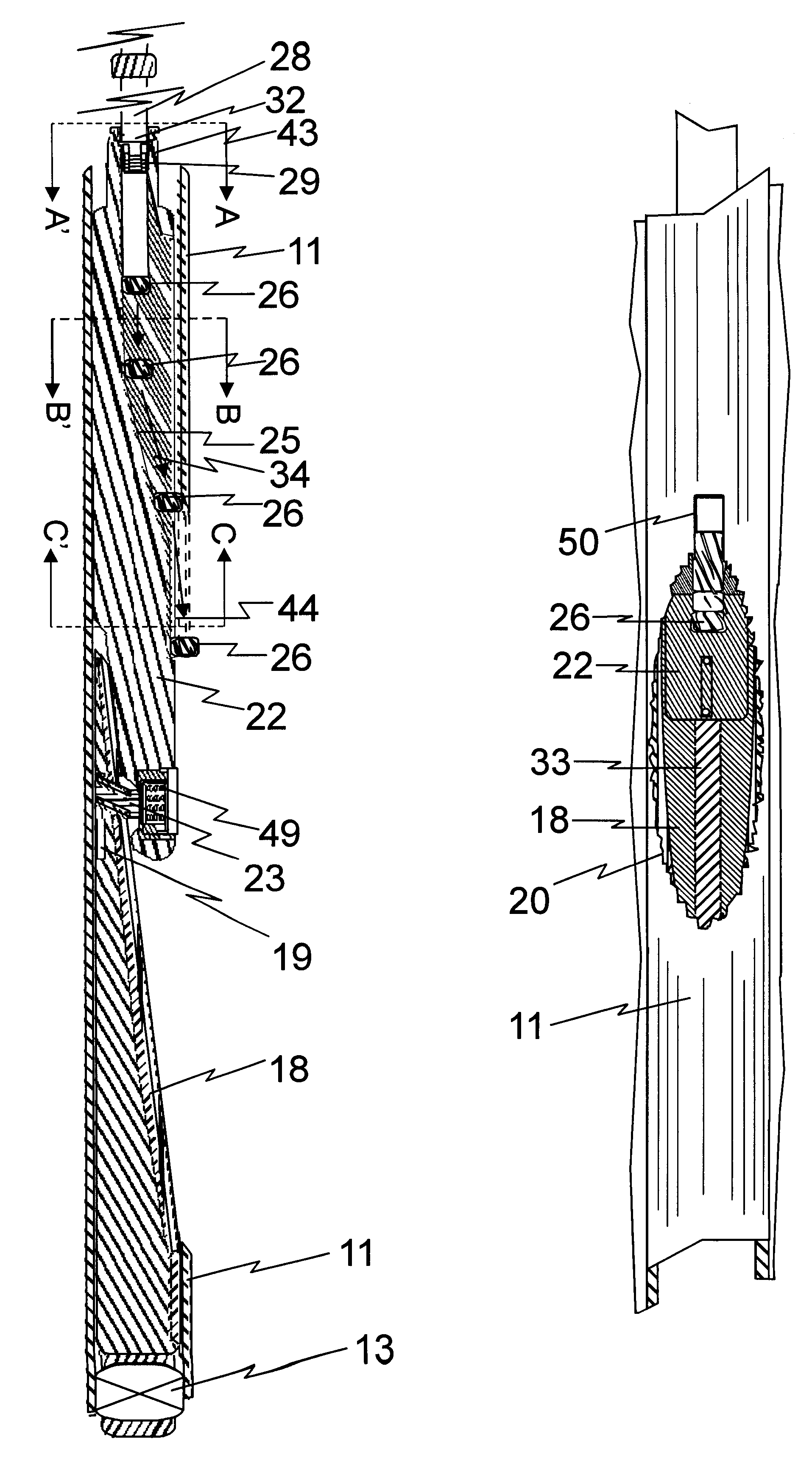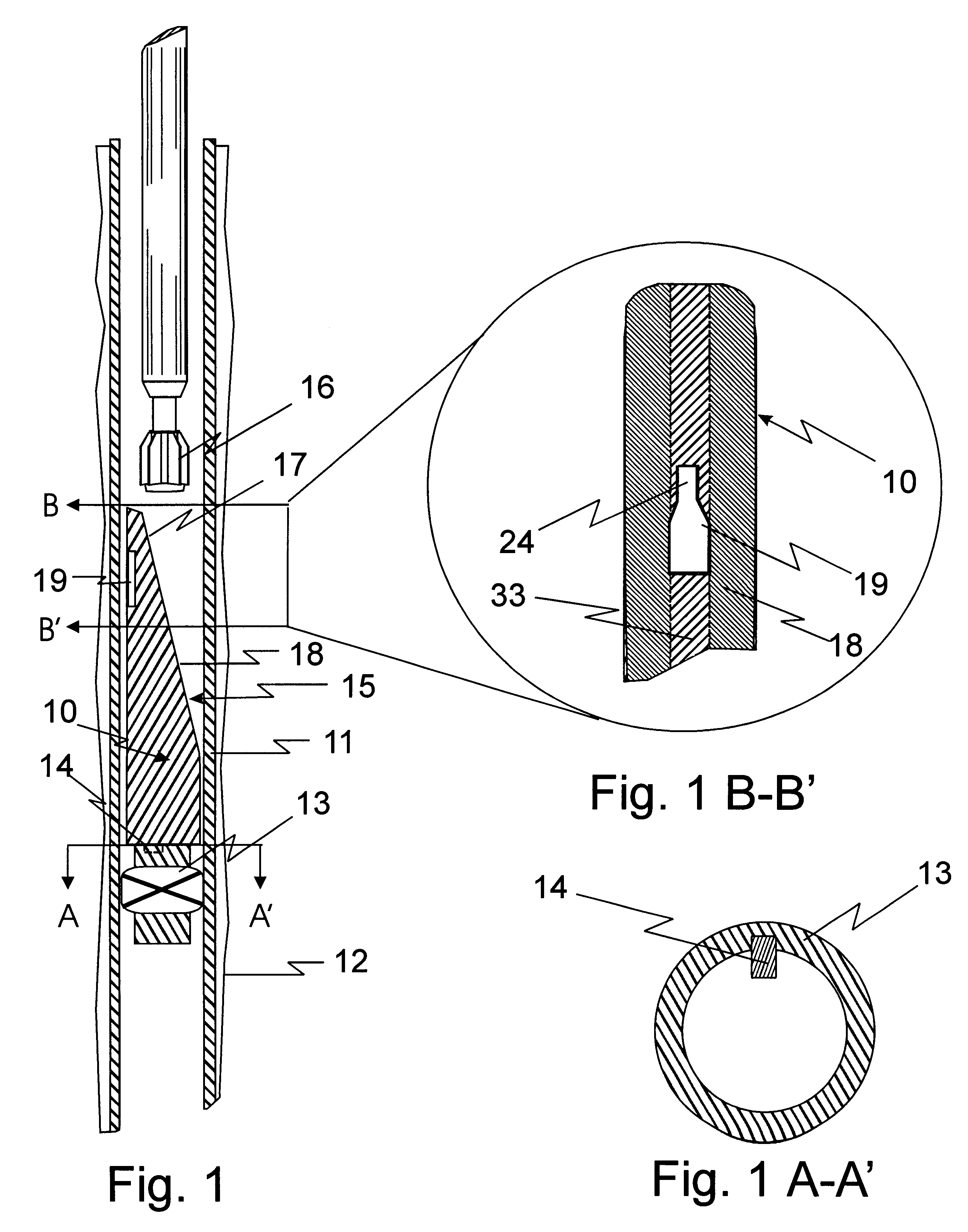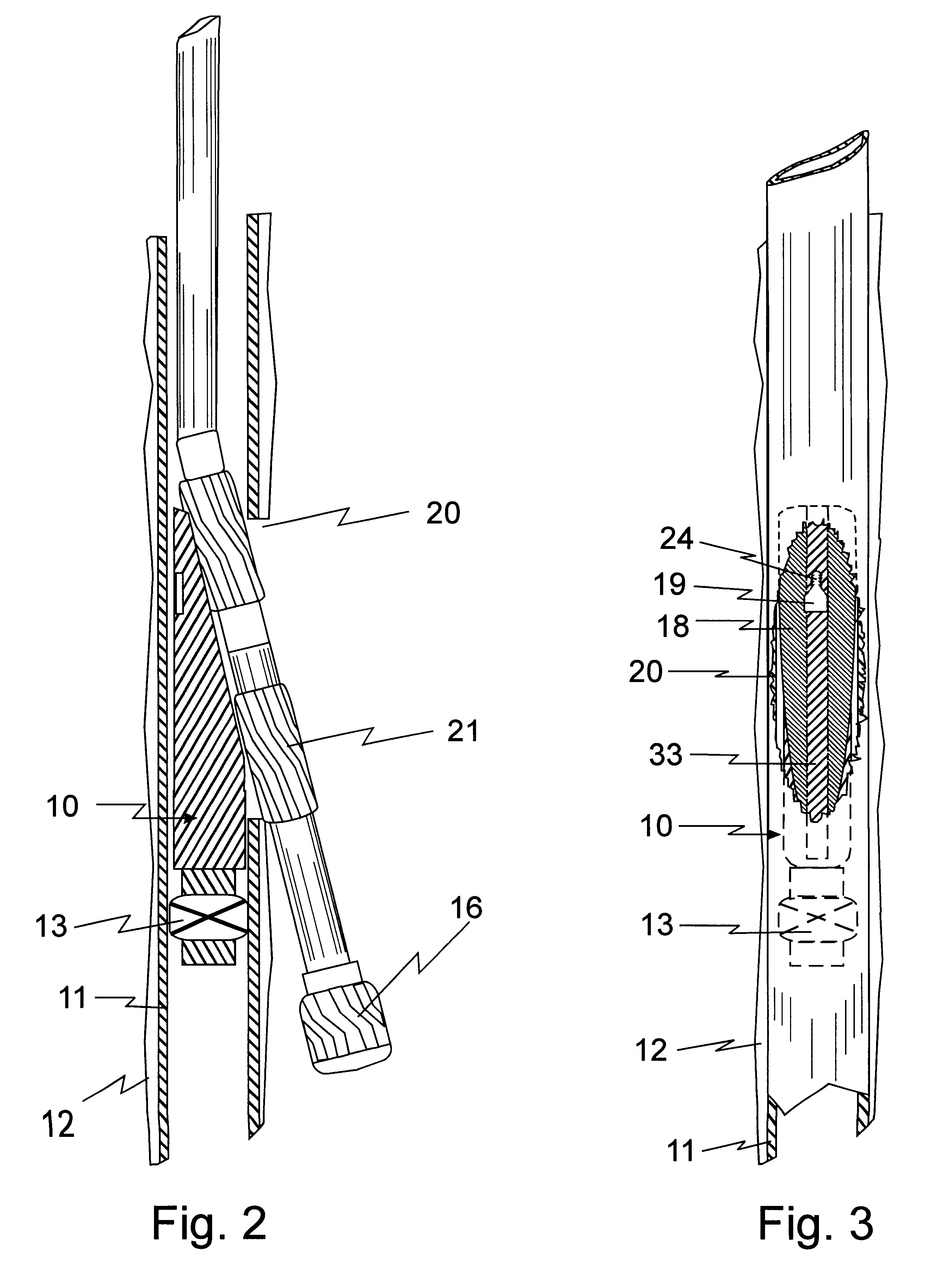This meant that it was difficult or impossible to reenter these laterals in the event that workovers or stimulation was required.
The equipment currently available in the industry is limited in allowing access to these laterals.
However these slots are limited to new wells as they must be installed in the
casing string prior to the time that the casing is run.
However allowing this packer to remain in the well restricts the ability to access the
wellbore below this point.
Some drawbacks of these systems is their inherent inaccuracies in placement and unreliability in securing the deflection apparatus involved due to the inexact nature of the window which are milled downhole.
These systems have been difficult to use because of the jagged, rough edges and
metal shavings produced by the down hole milling of the window and can prevent the proper setting and alignment of such reentry tools.
Though the number of multi laterals being drilled in existing wells has also increased, there has also been an increase in the problems associated with their installation because they are being used in more and varied well conditions and at more extreme angles of deviation from the vertical well bore than ever before.
While there have been developed, many techniques to solve some of these problems they have only resulted in creating other and different problems.
While these approaches have had some success they have limited use because they reduce the access to some producing zones because they often project inwardly to the well , or in the case of an old well use a packer, which restricts access below this point in the well casing.
Any
system which restricts the operating
diameter of the well bore also
restrict the ability to operate other tools in the well passed the area were a multilateral has already been drilled.
Due to the large forces used in wells created by the
pipe and tools being moved up and down, these internal projections are subject to being damaged or destroyed by tools working in the casing, which would render the projections useless for their intended purpose.
Thus the expense of the first multilateral well drilled could be completely lost, as well as access to that oil bearing strata without undertaking great additional expense.
Clearly multi-lateral drilling assemblies which have come under use in deeper and more complex older wells are more likely to have problems associated with retrieving and manipulating them in the well bores and successfully completing a multilateral.
This is because the
record keeping associated with these wells may have been lost or even if it exists, may not be as accurate as the records which are kept today.
It is also more likely that numerous reentries or production operations undertaken on these wells over the years may have led to damage of the casing in certain areas.
In older well at greater depths a yet further problem is finding the
exact location of the window which has been milled downhole and to properly orient the completion and production equipment to put that multilateral well in service.
This
mating process could be a relatively complex arrangement and require diligence and accuracy in finding the correct key
system.
Also it required a very detailed and complicated
record keeping procedure for any future work which might be done in the well for the future.
Also as the various key-receivers for each well could be different it required the maintenance of a large inventory of each key
system and this problem is growing as the number of such systems is increasing around the world.
As the prior art often dealt with existing wells, which often used
small target areas and which by nature are somewhat messy and unclean, these target areas can be completely fill up with
metal shavings from earlier milling operations or formation cuttings which were generated when the lateral was drilled.
In this case the spring loaded key would not have a space into which it could engage, with the corresponding problems of not being able to set other tools without additional work and runs back into the hole to clear the key hole or key ways.
Yet another problem in the prior art is the reentry of the at least one multi-lateral well once it has been drilled and completed, without leaving the whip stock and other orientation devices in the well.
Leaving any of this equipment in the well would block other formations from having multilateral wells drilled in them, which is often not acceptable.
Unfortunately removing this equipment left few if any means of identifying the entrance to the at least one multi-lateral well bore.
A further problem was even finding the down hole milled window because if the well is an older one many of the keys or indicators which were originally attached or fixed in the casing or tubular walls have been damaged or destroyed by other work that has occurred in the well since the drilling of the at least one multi-lateral well.
Also in the prior art the ability to reenter a well is many times totally dependant on the accuracy of the historical records kept on a well and the older the well the less likely the well records were likely to be available for use in the reentry process which rendered reentry either impossible or very expensive.
Further in the prior art the accuracy of reentry was not very good and while reentry was made it was not very accurately done with the corresponding
wear and tear on the windows and key systems used, with a corresponding shortening of the life of the downhole milled window and it's
keying system of what ever kind.
 Login to View More
Login to View More  Login to View More
Login to View More 


